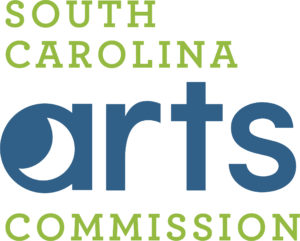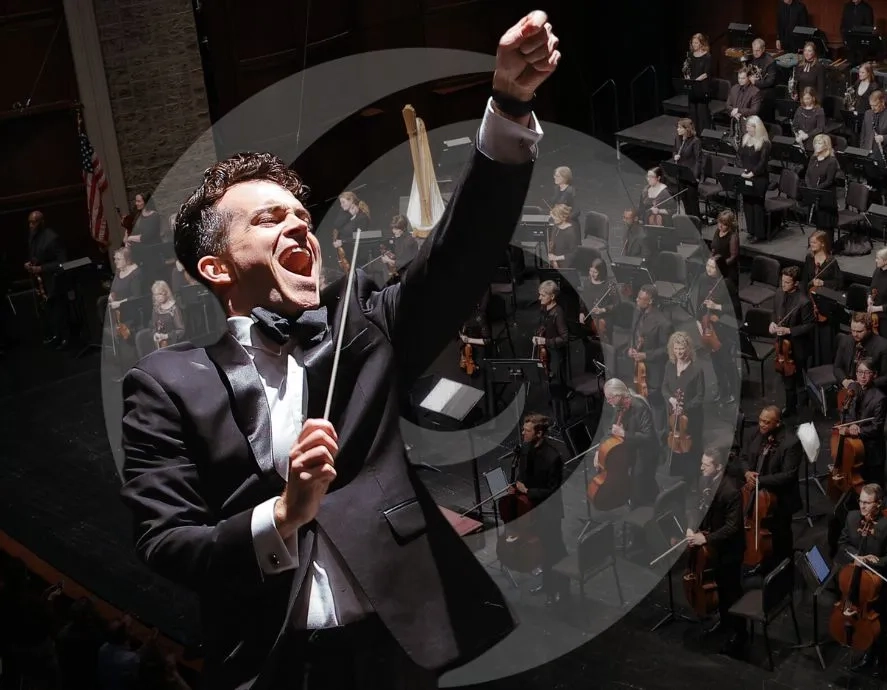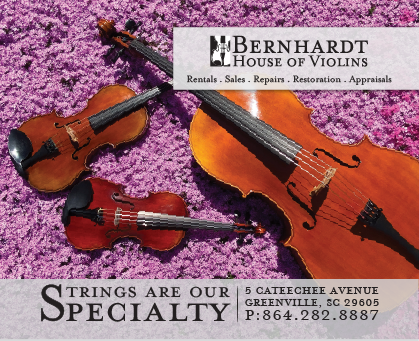
A MIDSUMMER NIGHT'S DREAM
Saturday, January 22, 2022 at 8:00 p.m.
Sunday, January 23, 2022 at 3:00 p.m.
Peace Concert Hall
John Young Shik Concklin, guest conductor
SIBELIUS (1865-1957)
Symphony No. 3
I. Allegro moderato
II. Andantino con moto, quasi allegretto
III. Moderato - Allegro (ma non tanto)
intermission
C. ASSAD (b. 1978)
Suite for Lower Strings
MENDELSSOHN (1809-1847)
A Midsummer Night's Dream
Overture
Intermezzo
Nocturne
Scherzo
Wedding March
![]()
Funded in part by a grant from the Metropolitan Arts Council, which receives funding from the City of Greenville, SEW Eurodrive, BMW Manufacturing Company, LLC, Michelin North America, Inc., and the South Carolina Arts Commission with support from the National Endowment for the Arts.
This organization is funded in part by the
South Carolina Arts Commissionwhich receives support
from the National Endowment for the Arts.
'A Midsummer Night’s Dream'
Program Notes by Paul Hyde
Symphony No. 3
Jean Sibelius (1865-1957)
In 1904, Jean Sibelius longed to escape the frenetic social atmosphere of Helsinki. His growing fame as a composer meant that Sibelius was constantly in demand at parties, performances and charitable events. “My art demanded another environment,” he later told his biographer Karl Ekman. “In Helsinki, all melody died within me. I was too sociable to be able to refuse invitations that interfered with my work. I found it very difficult to say no. I had to get away.”
The answer, for Sibelius, was to move with his wife and three daughters to a spacious log house in the woods near Lake Tuusula, northeast of Helsinki. It’s there that the Finnish composer began work on his Third Symphony. The symphony marked a turning point in Sibelius’ musical approach: from the expansive romanticism of his earlier symphonies to a more streamlined style of disciplined power.
The symphony is in three movements, with the third representing both the scherzo and finale of a traditional four-movement symphony.
- The first movement begins energetically with a seven-note rhythmic pattern. Sibelius, however, soon introduces a songful contrasting theme. Both of these themes are extensively developed: lyrical material alternates with the opening theme’s scurrying momentum. A chorale-like episode brings the first movement to a noble conclusion.
- The lilting second movement theme, tinged with nostalgia and melancholy, is played by various woodwind combinations before being taken up by muted strings.
- The busy, mercurial scherzo at the beginning of the third movement is built from thematic fragments. This leads into the finale proper, with cellos introducing the anthem-like theme that will dominate the rest of the movement. When the brass proclaim the theme, against restless strings, the melody takes on the character of a grand march or procession to conclude the symphony.
“Suite for Lower Strings”
Clarice Assad (b. 1978)
Clarice Assad is an award-winning composer, pianist, arranger and singer from Rio de Janeiro. She composed her “Suite for Lower Strings” (2009) for the New Century Chamber Orchestra. Assad was concerned that in most works the viola and cello players rarely had a chance to display their talent, so she decided to switch roles and give them the melody while the violins provided the accompaniment.
The suite is based on music from about a dozen of Johann Sebastian Bach’s best-known works such as his Brandenburg Concertos, Toccata in D minor, “Jesu, Joy of Man’s Desiring,” “The Well-Tempered Clavier,” an unaccompanied cello suite, and especially the “Air on the G String.”
The themes are presented in an imaginative manner, and listeners are challenged to discover how many melodies they recognize as they are broken up into fragments, played against each other, passed from one instrument to another, or given dissonant accompaniments.
“A Midsummer Night’s Dream”: Overture and Incidental Music
Felix Mendelssohn (1809-1847)
Overture: Mendelssohn’s Overture to “A Midsummer Night’s Dream” opens with four gleaming woodwind chords. Immediately following is the sprightly fairy music in the strings that transports the listener to the Shakespearean world of Oberon and Tatiana, king and queen of the fairies. It’s remarkable to recall that this music was the work of a 17-year-old. A grand outburst from the full orchestra and fanfares in the brass announce that a celebration is forthcoming. Lyrical melodies introduce an episode suggesting the bray of Bottom, who wears the head of a donkey. The whispering, scurrying fairy theme from early in the overture is extensively developed. The overture ends with the four woodwind chords from the beginning.
More than 15 years after Mendelssohn wrote the overture, he was commissioned by Friedrich Wilhelm IV to compose incidental music for a production of Shakespeare’s comedy in Potsdam. The following four movements were part of the 13 additional numbers the 33-year-old Mendelssohn composed.
Intermezzo: Turbulent music in a minor key represents two pairs of lovers, lost at night in the forest and on the verge of desperation because the mischievous Puck has caused one of the men to fall in love with the wrong woman.
Nocturne: Puck has lulled the four lovers into a deep sleep in the forest. The gentle chorale played by horns and bassoons underscores an atmosphere of contentment.
Scherzo: The music is reminiscent of the feather-light fairy music from the overture, with whispering strings and laughing woodwinds.
Wedding March: The grand wedding march needs no introduction, but what a joy to hear it played live by the full orchestra. The wedding march introduces the celebration of Theseus, duke of Athens, and Hippolyta, queen of the Amazons, at the beginning of Act V of “A Midsummer Night’s Dream.”
Paul Hyde, a longtime Upstate journalist, is an instructor in the English departments at Tri-County Technical College and Lander University.
VIOLIN I
Mary Lee Taylor Kinosian, Concertmaster
Leila Cunningham Roe Endowed Chair
Xiaoli Saliny, Assistant Concertmaster
Uwe Diestel Endowed Chair
David Edwards
Robin Hague Els
Catherine Hazan
Shawn Hurt
Deirdre N. Hutton
Sarah Land
Lisa Munoz
Carol Roosevelt
Jonathan Urizar
Shr-Han Wu
VIOLIN II
Joanna Mulfinger, Principal
Martha Gardner, Assistant Principal
Kristen Browning
Catherine H. Crowe
Elizabeth Fee
James R. Johnston
Emily Kirkpatrick
Kathryn Otwell
Ashley Whittle Odom
Kathleen S. Robinson
VIOLA
Kathryn Dey, Principal
Erika and Chuck Riddiford Endowed Chair
Arthur Ross III, Assistant Principal
Carolyn Alford
Matthew Darsay
Carolina Diaz Chan
Scott Garrett
Michael Holub
Kara Poorbaugh
CELLO
Seth Russell, Principal
Guild of the Greenville Symphony Endowed Chair
Robert O'Brien, Assistant Principal
Ismail Akbar
Jean Beaudoin
Miro Gomez
Christopher Hutton
Meredith Keen
David Saliny
DOUBLE BASS
Tim Easter, Principal
Anonymous Endowed Chair
Ian Bracchitta, Assistant Principal
Todd L. Beal
Maurice Belle
Levi Gable
Rich Harbison
FLUTE
Caroline Ulrich, Principal
Alice and Gerry Lenz Endowed Chair
Wendy Cohen
OBOE
Virginia Zeblisky Metzger, Principal
Guild of the Greenville Symphony Endowed Chair
Kelly Mozeik
CLARINET
Anthony Marotta, Principal
Harriet and Jerry Dempsey Endowed Chair
Ki-Deok Park
BASSOON
Allen Jiang, Principal
Anonymous Endowed Chair
Reed Hanna
HORN
Anneka Zuehlke-King, Principal
Charles W. Wofford and Nancy B. Thomas Endowed Chair
Elizabeth Regas
Bill L. Tyler
Darian Washington
TRUMPET
Phillip Elkins, Co-Principal
Beverley and Jim Whitten Endowed Chair
Kevin Lyons, Co-Principal
Gary Malvern, Assistant Principal
TROMBONE
Stephen Wilson, Co-Principal
Mark Britt
Eric Henson
TUBA
Coleman Alexander, Principal
TIMPANI
Daniel Kirkpatrick
PERCUSSION
Edward C. Nagel
OPERATIONS & PERSONNEL
Angie Jones
PRODUCTION MANAGER
Laura Auvil
PRINCIPAL LIBRARIAN
John Wickey
FEBRUARY
VIRTUOSOS of the GSO
Friday, February 4 at 8:00 pm
Saturday, February 5 at 8:00 pm
Sunday, February 6 at 3:00 pm
Chamber - Gunter Theatre
BRAHMS String Quintet No. 2
HANDEL Arrival of the Queen of Sheba
CHEETHAM Brass Menagerie
SORG Mental Disorders
ROBLEE Blues for Brass
DVORAK'S "NEW WORLD" SYMPHONY
Saturday, February 26 at 8:00 pm
Sunday, February 27 at 3:00 pm
Masterworks - Peace Concert Hall
Edvard Tchivzhel, conductor
Olga Kern, piano
RACHMANINOFF Piano Concerto No. 1
DVORAK Symphony No. 9 ("From the New World")
Tickets start at just $19.
The Greenville Symphony Orchestra thanks Community Journals and Salem Media Group (94.5 FM "The Answer," 103.3 FM & 95.9 FM "The Earth" and 96.9 FM "Rejoice") for providing promotional support.

Concert Hall Series
Saturday performances at 7:30 pm
Sunday at 3:00 pm
Opening Night: Beethoven’s Ninth
October 5 & 6
Grieg’s Piano Concerto
November 23 & 24
Tchivzhel Conducts Tchaik 4
January 25 & 26
Duke Ellington’s The River
March 1 & 2
Jacqueline Tso plays
Bruch’s Scottish Fantasy
April 5 & 6
Beethoven and Brazil
May 10 & 11
Gunter Theatre Series
Performance start times vary
Peter and the Wolf
November 9 & 10
The Marriage of Figaro
February 15 & 16
Movers, Shakers, and Noise-Makers
March 22 & 23
Bach-Inspired with Violist Kathryn Dey
May 24 & 25
Special Events
Holiday at Peace
Peace Concert Hall
December 6 at 7:00 pm
December 7 at 1:00 & 7:00 pm
December 8 at 2:00 pm
Harry Potter and the Prisoner of Azkaban™ in concert
Peace Concert Hall
January 11 at 1:00 pm and 7:00 pm
January 12 at 2:00 pm
Star Wars: The Empire Strikes Back in Concert
May 4 at 7:00 pm
Bon Secours Wellness Arena
Music at Hotel Hartness
A luxe chamber music experience in a beautiful space.
Performances at 7:00 pm
Dracula! with Special Guest Dacre Stoker
October 23
Musical Landscapes
April 23
Music in the Gray Loft
Enjoy lunch or wine with a friendly, casual chamber music experience.
Performances at 12:00 and 5:30 pm
Dracula! with Special Guest Dacre Stoker
October 24
Musical Landscapes
April 24
Details and tickets available at greenvillesymphony.org








